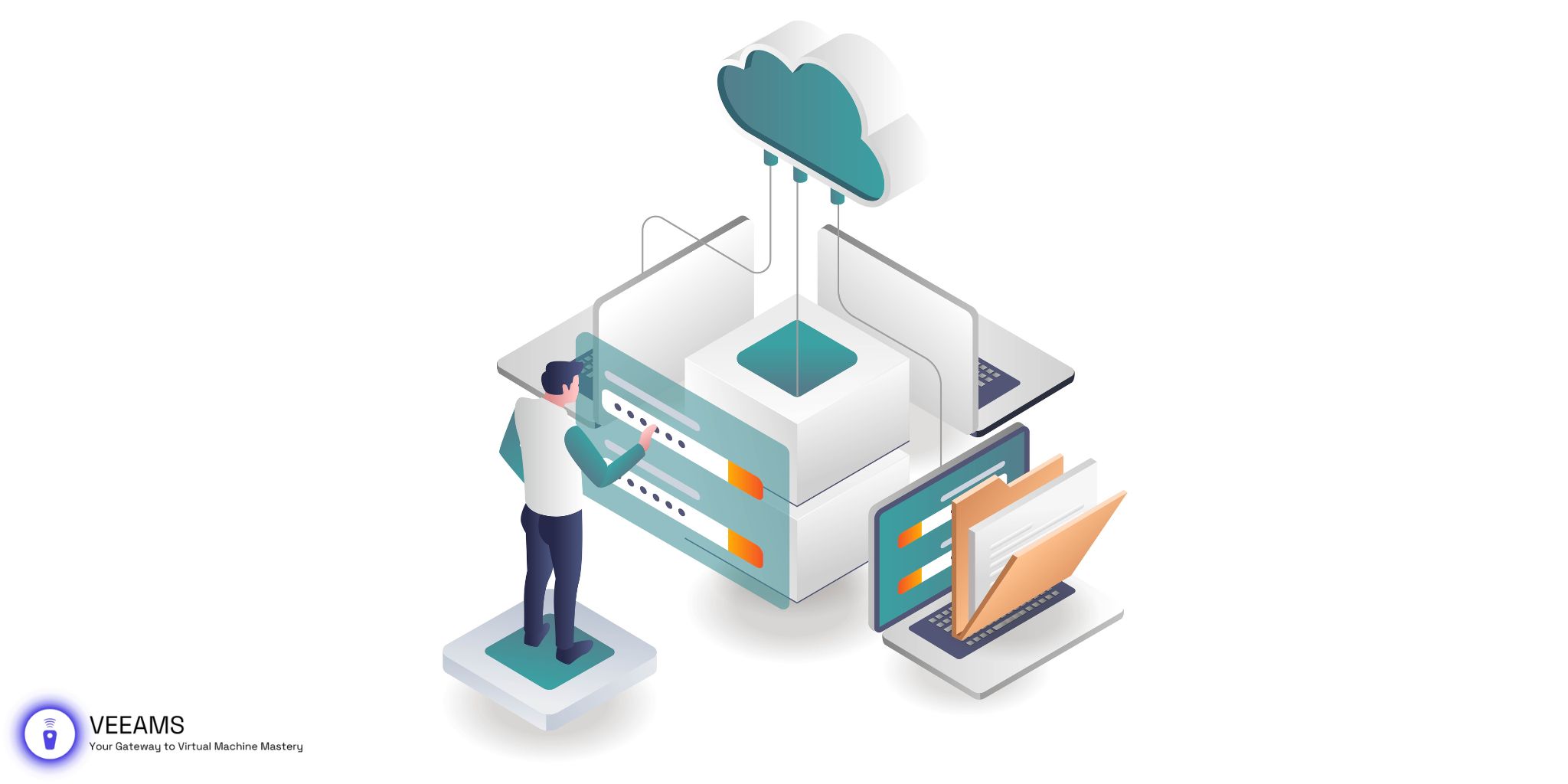Veeam and VBM Files
If you’re diving into the world of Veeam Backup & Replication for the first time, you’re in for a treat. Veeam isn’t just another backup solution; it’s a powerhouse designed to make your life easier and your data safer. And when it comes to backups, there’s one little hero that plays a huge role but often flies under the radar: the VBM file.
So, what’s the VBM file, and why should you care? VBM stands for Veeam Backup Metadata. This file is the brain behind the operation, storing critical information about your backups, like their configuration, contents, and more. Understanding the VBM file is like having a backstage pass to your backup process—it lets you manage and troubleshoot your backups with ease.
Configuring Your Backup Job: A Primer
Configuring your first backup job is your first real step into the world of Veeam. Here’s how to do it without breaking a sweat:
- Open Veeam Backup & Replication Console: Fire up the console and let’s get started.
- Create a New Backup Job: Navigate to the ‘Backup Job’ section and click ‘Create’.
- Select Your Backup Source: Whether it’s a VMware vSphere VM, a Hyper-V VM, or physical hardware, Veeam’s got you covered.
- Define Backup Repository: Choose where you’d like to store your backups. Remember, this location will also house your VBM files.
Executing Your First Backup: A Detailed Walkthrough
With your backup job configured, it’s showtime. Executing your first backup might feel like launching a rocket, but it’s actually more like baking a cake—just follow the recipe:
- Start the Backup Job: Hit ‘Start’ on your newly created backup job. You can monitor progress in the ‘Job’ section.
- Understand the Process: As Veeam works its magic, it’s creating a VBM file alongside your backup. This file is updating in real-time, recording every detail of the backup process.
Monitoring and Managing Backup Progress
After you’ve kicked off your backup, don’t just walk away! Monitoring the progress gives you insight into how your backup is performing and alerts you to any issues right away. Here’s what to keep an eye on:
- Job Status: Check the progress bar and status messages within the Veeam console. A successful backup will be clearly marked, but pay attention to any warnings or failures.
- Performance Statistics: Veeam provides details on the speed and size of your backup. This data can be gold for optimizing future backups.

VBM File Recovery: How and When to Do It
Sometimes, even with the best-laid plans, things go awry. The VBM file, as crucial as it is, isn’t immune to issues. Whether it’s due to corruption, accidental deletion, or other unforeseen problems, knowing how to recover your VBM file can save the day. Let’s dive deeper into how and when to tackle VBM file recovery.
Understanding the Need for VBM Recovery
The need for VBM file recovery typically arises under a few scenarios:
- Corruption: If the VBM file gets corrupted, Veeam may not recognize or properly manage your backups.
- Accidental Deletion: Mistakes happen. If the VBM file is accidentally deleted, your backup chain might become orphaned.
- Storage Failures: Issues with your backup storage can lead to lost or inaccessible VBM files.
Recognizing these situations early is key to preventing data loss or backup disruptions.
Steps for Effective VBM File Recovery
- Assess the Situation: Before diving into recovery, understand the extent of the issue. Is the VBM file corrupted, missing, or inaccessible?
- Use Veeam’s Built-In Recovery Options: Veeam often can regenerate the VBM file automatically from existing backup data. This is your first and simplest recovery option. Navigate to the backup job and look for options to rebuild the backup chain or regenerate metadata files.
- Manual Recovery Techniques: If automatic recovery doesn’t do the trick, you might need to manually recreate the VBM file. While more technical, this process involves using Veeam PowerShell scripts or utilities to extract metadata from backup files and recreate the VBM. Veeam provides documentation and community support for these advanced recovery methods.
- Prevention is the Best Medicine: After recovering your VBM file, take steps to prevent future issues. Regularly check the integrity of your backups, keep your Veeam software up to date, and ensure your storage systems are reliable and secure.
When to Seek Professional Help
If you’ve attempted the above steps without success, or if the situation is particularly complex, it might be time to call in the cavalry. Veeam’s support team and the broader Veeam community are valuable resources. Don’t hesitate to seek professional advice to ensure your data protection strategy remains solid.
Best Practices for Veeam Backups and VBM File Management
To make your life easier and your backups smoother, here are some golden rules:
- Regularly Test Your Backups: Don’t wait for a disaster to find out your backups aren’t working. Test restores often.
- Keep Your Backup Repository Secure: This is the treasure chest. Make sure it’s locked tight from threats, both digital and physical.
- Optimize Backup Jobs: Balance speed and storage. Use compression and deduplication features to save space without sacrificing backup integrity.
Troubleshooting Common VBM File Issues
Even with the best planning, you might hit a snag. Here are quick fixes for common VBM file hiccups:
- Missing VBM File: Ensure your backup repository is correctly connected and accessible. If the file is missing, a backup job rerun might regenerate it.
- Corrupted VBM File: If you suspect corruption, the first step is to attempt a VBM file regeneration from Veeam. If that fails, consulting Veeam’s support community can offer more specific guidance.
Securing Your Backups: Best Practices for Data Protection
Last but not least, let’s talk security. Your backups are your safety net, so here’s how to keep them safe:
- Use Encryption: Encrypting your backups protects them from prying eyes, both during transmission and at rest.
- Limit Access: Only trusted personnel should have access to your Veeam console and backup repository.
Conclusion
Congratulations! You’ve navigated through your first Veeam backup and decoded the mysteries of the VBM file. But don’t stop here. Veeam is packed with features to explore, from replication to cloud backups. Keep experimenting, keep learning, and most importantly, keep your data safe.
